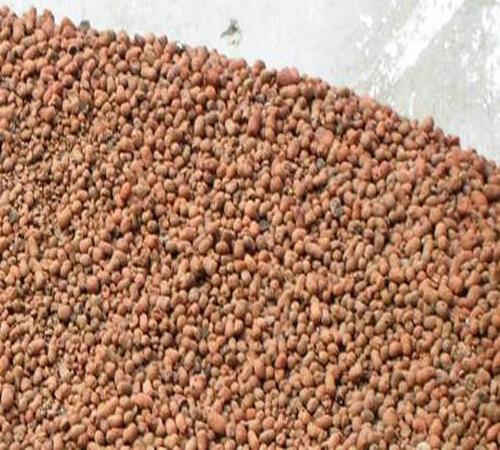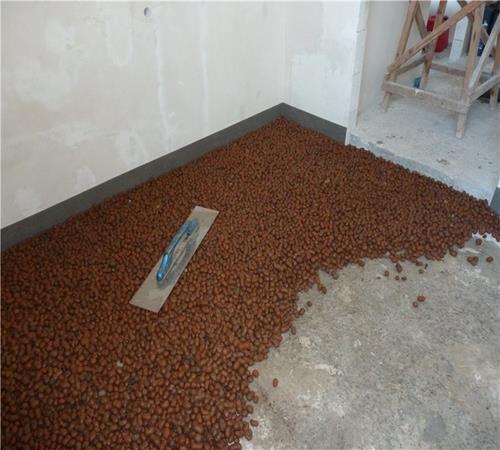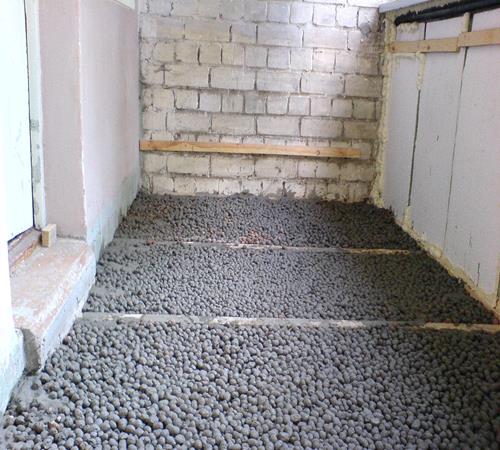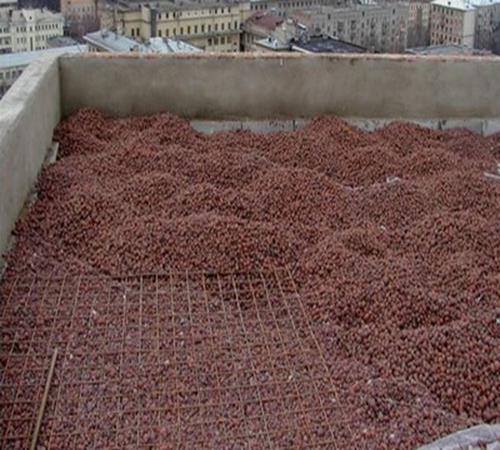Without a high -quality foundation, it is impossible to build a country house, summer kitchen ...
|
|
The construction of your own home is always accompanied by numerous chores and ... |
Among the familiar heater so far, so conveniently so convenient in ... |
How to insulate the floor with expanded clay

Ceramzit personifies real salvation when choosing a simple and durable material that can solve two important tasks during repair: insulation and alignment of the surface. Moreover, insulation is applicable not only to the floor. Expanded clay is equally good for filling or filling on the floor, walls and even for the ceiling. This universal material is not a new product in the field of construction, it has been used for more than a dozen years, and during this time only approving reviews have been deservedly received. In important - expanded clay is completely environmental material, no chemical additives are used in its production. In fact, expanded clay is obtained from granules of clay shale by firing at a fairly high temperature (over a thousand degrees Celsius) with their further treatment in the furnace drum. The decision to insulate the floor with expanded clay will be correct, since this truly unique material does not have direct competitors.
Table of contents
- Properties of expanded clay
- Preparation for floor insulation with expanded clay
- Filling the floor with expanded clay
- Recommendations for floor insulation by expanded clay
- Necessary waterproofing for expanded clay
- The advantage of the choice of expanded clay for gender insulation
Properties of expanded clay
The main purpose of expanded clay is to use this bulk material as a heater. The material has a wide list of properties that allow it to occupy a leading position when choosing a preliminary insulation coating. We highlight the basic properties of expanded clay, thanks to which its success was ensured:
- The level of thermal insulation. A layer of poured expanded clay with a thickness of only 10 centimeters in terms of its indicators corresponds to a wood coating, the thickness of which is three times larger. Compared to brick masonry, a difference of ten times in favor of bulk material. The thermal conductivity of expanded clay is only 0.12 W/MK,
- High strength (depending on the selected variety, the density of the material varies from 250 to 600 kg per cubic meter).
- An excellent degree of sound insulation (which is important for urban apartments of standard layout).
- Durability (in fact, expanded clay is clay, so you can be sure, the expanded clay layer will survive the duration of the durability of buildings, especially typical nine -story buildings).
- Resistance to the effects of chemicals.
- Thermal resistance and refractory.
- Frost resistance (expanded clay is absolutely insensitive to temperature differences).
- Slight weight with a large volume of the coating (filling the layer of expanded clay does not require special frames and amplifying structures).
- Low price (wholesale price is from $ 2.5 for a bag weighing 20 kilograms).
- Simplicity in laying (material does not require special preparatory work).

Keramzit for the floor has only one drawback - this is a low moisture resistance of the material. Granules when absorbing moisture for a long time hold it in their structure, as a result of which it is important to observe all the requirements when using backfill.
Preparation for floor insulation with expanded clay
Filling with expanded clay does not require special complexity, but nevertheless, all the necessary preliminary calculations should be made and thoroughly prepares before starting work:
- First of all, the load on the surface is calculated, because the floor has the most effort. The necessary thickness of the coating layer is determined in order to provide not only a reliable, but also a high -quality coating in the future.
- All potholes and cracks on the old floor should be shown.
- After that, a layer of waterproofing is applied to the floor, which can also be coatings made of dense plastic film. It is important that the edges of the film when laying go to the walls about 10 centimeters above the flood level. After installing the floor surface, all excesses will be removed, which will not violate the aesthetic type of coating.

The indicated work will not take much time, and after their implementation, you should start laying the floor. It should be noted that laying does not require special building skills. In fact, anyone can make a flat floor with expanded clay, the video on the styling of which is presented below.
Filling the floor with expanded clay
Depending on the flooring, several differing methods of floor insulation by expanded clay are used. In this article we will tell about the main varieties and features of ensuring reliable coating for each type of floor:
- Paul on the lags. In the event that the lags (wooden beams that are located horizontally and are used to create the support of the floors of the building) are placed directly on the ground, then the surface should first be cleared. Then, if the lags are supposed to be removed, the layer of roofing material should be spread over the entire surface, on top of which the clayamzite of different fractions will be directly poured. If it is supposed to leave the lags and use them in the future, then the styling concept is slightly different. After removing the flooring in the intervals between the lags, a roofing material is laid, which serves as waterproofing, and after that expanded clay. On the top of which a layer of foil vapor barrier is laid, after which an additional layer of thermal insulation (as a foam or polystyrene foam) is already, then a cement screed is poured. If the lags are fixed on brick supports, then the expanded clay falls asleep to the level of the lag, after which the flooring and layers of vapor barrier, as well as additional insulation, are already laid on top.

- Filling expanded clay on the concrete floor. Most of all, this method is suitable for those rooms where the height of the ceilings allows you to raise the floor level to a significant mark. In principle, this is possible and even relevant for panel typical houses, the floors in the apartments of which even with a stretch cannot be called warm and comfortable, especially in the cold season. Before carrying out work, the old flooring should be dismantled (often it is a layer or two old linoleum, laid simply over a bare concrete slab), after which large potholes should be closed. Following this, a layer of waterproofing is a dry polyethylene film, which is a dry pouring layer of expanded clay. The backfill should be done from left to right, starting from the walls and gradually moving to the doorway. For uniform falling asleep, beams are used to set the same even level for the floor of the entire room. The first lighthouse should be mounted at a distance of 3 centimeters from the wall, the following beacons are located in parallel, taking into account the length of the rule that is used to set the level. After that, the coating is moistened with the so -called cement milk for better granules of granules on the surface with each other. Milk is a mixture of involved cement and water in proportions: one part of the cement for four parts of pure water. Experts recommend using expanded clay for the floor, the fraction of which has different sizes of granules. For apartments, the most optimal is the option with mixing granules with a diameter of 10 mm and expanded clay sand, or small granules in size of 5 mm. Later, when the expanded clay layer was evenly distributed on the floor and fixed with a cement mortar - after a day it is covered with a screed. It should be remembered that on top of any layer of thermal insulation, foil vapor barrier should be laid.
- Concrete floor in non -residential premises. In places where the creation of a thermal insulation layer is required, provided that it is a non -residential type of premises, for example: a garage or a bathhouse is a fairly simple styling technology. After laying the waterproofing strips, a special solution of expanded clay and concrete is prepared, with proportions for 1 part of the water, 2 parts of the sand, 1 part of the cement and 3 parts of expanded clay are added. Then the prepared solution is evenly distributed over the surface and, if necessary, aligned by the level of beacons.

- Dry screed of expanded clay. The specified method is distinguished by its simplicity and, perhaps, is most optimal for insulation and alignment of floors in standard apartments. The essence of the technology is simple: on previously cleaned of the old coating and possible garbage, as well as dust, the floor, waterproofing is laid, then dry expanded clay expands of different fractions is poured according to pre -installed lighthouses. Next, moisture -resistant boards of chipboard or OSB are laid on expanded clay, after fixing them with sealant and self -tapping screws, you should proceed to the installation of any finish coating: whether it be linoleum, parquet or laminate.
Recommendations for floor insulation by expanded clay
Keramzit for the floor, the price of which allows you to use this type of insulation without impact on any budget is good and not demanding on operating and climate conditions. However, you should adhere to the main recommendations:
- to achieve the better effect of thermal insulation, expanded clay is used separately and as dry backfill, without mixing with concrete,
- the thickness of the layer should be calculated primarily from the permissible load that will be on the floor,
- it is advisable to fix the beacons set by a alabaster solution, which tends to freeze quickly enough (literally within a couple of minutes),
- to maintain the integrity of the design and reduce the risk of mechanical deformation, the clayamzite layer is recommended to be additionally reinforced with a metal mesh,
- for better adhesion of granules, it is imperative to use fractions of different sizes (simply put, mix large granules with smaller ones),
- the maximum strength of the floor is achieved only at the end of the fourth week, despite the fact that walking on the floor is possible in a few days, so it is recommended to wait out the due date.

In general, these recommendations are simple and what is especially important - all work with expanded clay can really be carried out by one person who does not have special building skills.
Necessary waterproofing for expanded clay
The above material has repeatedly mentioned the need to lay waterproofing material before filling. This material is currently available in different versions:
- bitumen -based mastic,
- material with bitumen impregnation,
- polymer mixtures,
- cement mixture with the addition of polymer structures,
- rubber -coating hydraulics,
- dense plastic film.
The last specified variety is one of the most common and economical. However, polyethylene -based materials are characterized by a poor degree of vapor permeability, in contrast to other varieties of waterproofing. According to experts, the best of the available options is the combination of bitumen mastic and bitumen materials (the same roofing material, for example). This composition is distinguished by durability and good waterproofing properties, which in conjunction with sufficient vapor permeability makes it one of the most popular.

Nevertheless, as an element capable of ensuring effective waterproofing, the use of such a familiar material as silica gel is considered. The specified material is the dried granules of gel obtained from silicon acid solutions. Silicagel is characterized by a high degree of absorption of moisture and vapors, which allows you to use it to eliminate the only lack of expanded clay - poor moisture resistance. It should be noted that silicahel granules should be used only with dry filling of the floors, preventing moisture from getting on it. It is possible to use silica gel in the following variations:
- mixing it with dry expanded clay of different fractions at the rate of 1 part of silica gel per 10 parts of expanded clay,
- or covering the floor with an uniform layer of granules 10 millimeters with a thickness of expense of expanded clay.
A similar method has not gained widespread in the construction sector due to the specificity of the granules of silicon gel, since the following features should be taken into account:
- despite its effectiveness in terms of moisture absorption, silica gel is a fire and explosive material,
- often, manufacturers add cobalt chloride to it, which is able to harm health and, in fact, is a carcinogene,
- silicagel dust contains particles harmful to the body.

So, as can not be noted, the use of silicavel is a disputed solution, however, the specified material is able to serve as a good adsorbent. When using it as a substrate before the backfill of expense clay, the granules of the granules will not penetrate the overlap and even more so into the air, so you should not be afraid of its direct effect on the body. However, the need to use such material will be more dictated by the desire to attract innovative ideas and depend on a specific situation.
The advantage of the choice of expanded clay for gender insulation
This material has been used for a long time and, thanks to its undeniable advantages, has far stepped into the construction spheres. In fact, expanded clay is the only variety of insulation that is absolutely safe and environmentally friendly, which distinguishes it among other materials for insulation. The porous and granular structure will allow you to easily warm and soundproof not only the floor, but also the walls with the ceiling. The granules will easily penetrate even in hard -to -reach places and voids in the walls and ensure the complete occupancy of the space, so that thermal insulation of any room will not be difficult. In addition, it is worth noting that due to the low weight of granules and their properties, the use of expanded clay will become a good support for any flooring.
